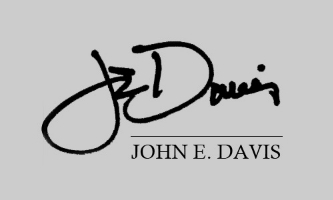Oils and Acrylics
My earliest memories are of trips afield with my parents who encouraged me to carry a notepad and sketchbook. Those early days infused in me a desire to capture and share with others the beauty of our natural world.
John’s passion for wildlife and wild places led to a career in conservation magazine writing and editing where he met and worked with some of our nation’s top wildlife artists and photographers. His extensive, intimate knowledge of native wildlife, natural habitats and outdoor pursuits provides an authenticity to his paintings.
John’s formal art training began at the University of South Carolina’s Sloan College of Art. The influences of Joquin Sorolla, John Carlson and Richard Schmid, as well as early-20th Century Western artists Edgar Payne and William Wendt may be seen in his paintings. John continues to study intensively, taking workshops from modern plein aire masters including: Larry Moore, Ken Backhaus and William Davidson.
Almost all of my paintings are begun in the field. At daybreak and dawn, in particular, time stands still while nature puts on her greatest display. It’s a magical time to be afield painting.
John is an Oil Painters of America and International Plein Air Painters member. He also is active In the Transylvania County Arts Commission and local art groups. His paintings are in private collections throughout the Carolinas and Virginia.
When not working out of his studio on Black Knob near Brevard, North Carolina, he may be found rambling the woods and waters of the Carolinas from the mountains to the sea. He often spends summers traveling and painting in Europe, and recently completed a series of landscapes while in the Provence region of France.
Artist Statement
While I classify myself as a realist, my driving focus is to capture the essence and mood of a scene or animal in a personal, intimate, somewhat impressionistic way, rather than simply record a scene or create a photo-realistic image.
I cannot recall a time when I did not doodle, sketch and paint – usually in small notebooks and occasionally on the walls of my room, much to my parents’ dismay. My art draws on a lifetime of outdoor experiences that began as a child following my dad and mom on rambles through the woods, mountains and marshes of the Southeast.
This fascination with the out-of-doors led to my serving 28 years as a natural resource professional. I believe that this intimate, life-long study of the natural world gives my paintings an honesty and authenticity.
I have worked in various media but currently prefer oils because of their blending properties as well as their luminous, hardwearing colors. They allow the creation of brush strokes and blends not possible with other media.
While I work hard to see that no conscious effort is evident, my compositions are carefully thought-out, constructed to lead the eye into and around the canvas. I use lost and found edges, subtle and stark shifts in value and color to give power to my focal points.
Whether in the mountains or on the coast, most of my works begin en plein air, or out-of-doors. On some days I’ll finish an entire painting on site, but my usual method is to take the painting as far as I can in the field and finish it in my studio. I usually do several pen or pencil sketches and up to three or four small color sketches in oils during a day afield to use as later reference for larger paintings.
When doing a wildlife portrait I try to get several photographs of an animal for details of anatomical accuracy, but I depend upon my personal knowledge of the animal along with my field sketches of an actual place or setting to create the scene and capture the way my subject moves, its habits and preferred habitat.
Our association with wild places and wildlife and our connectivity to the land is dwindling. My hope is that my paintings will enhance others’ appreciation of the beauty and majesty of the natural world and our interdependence with it.

